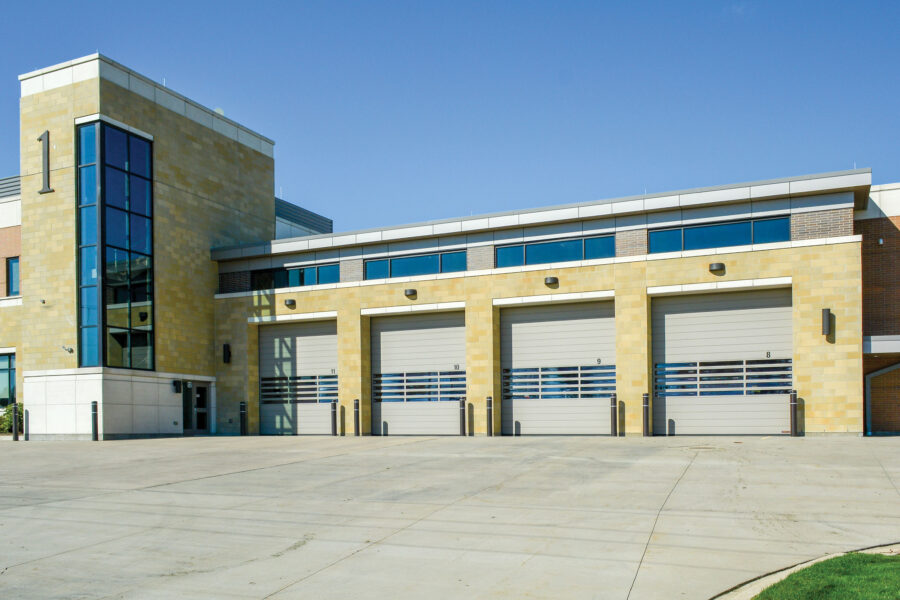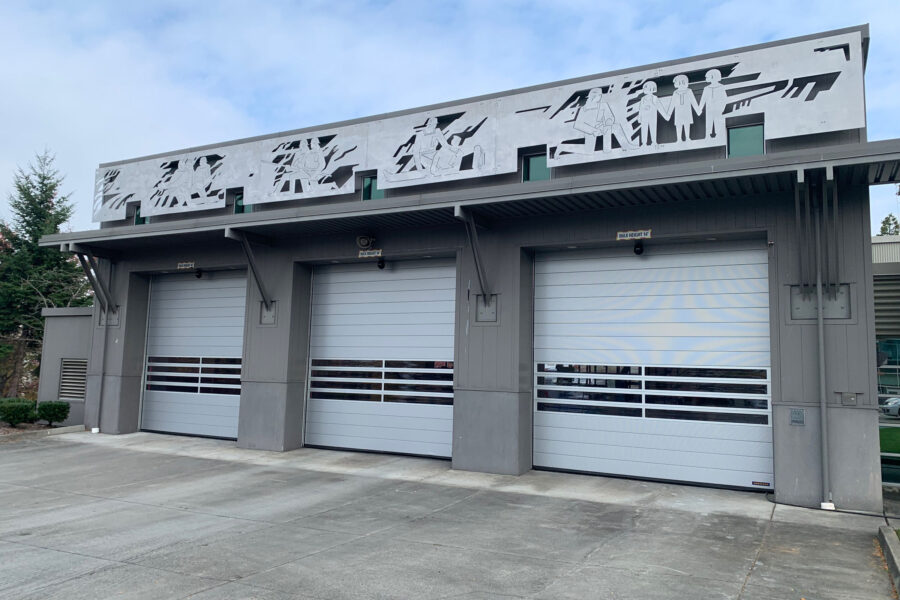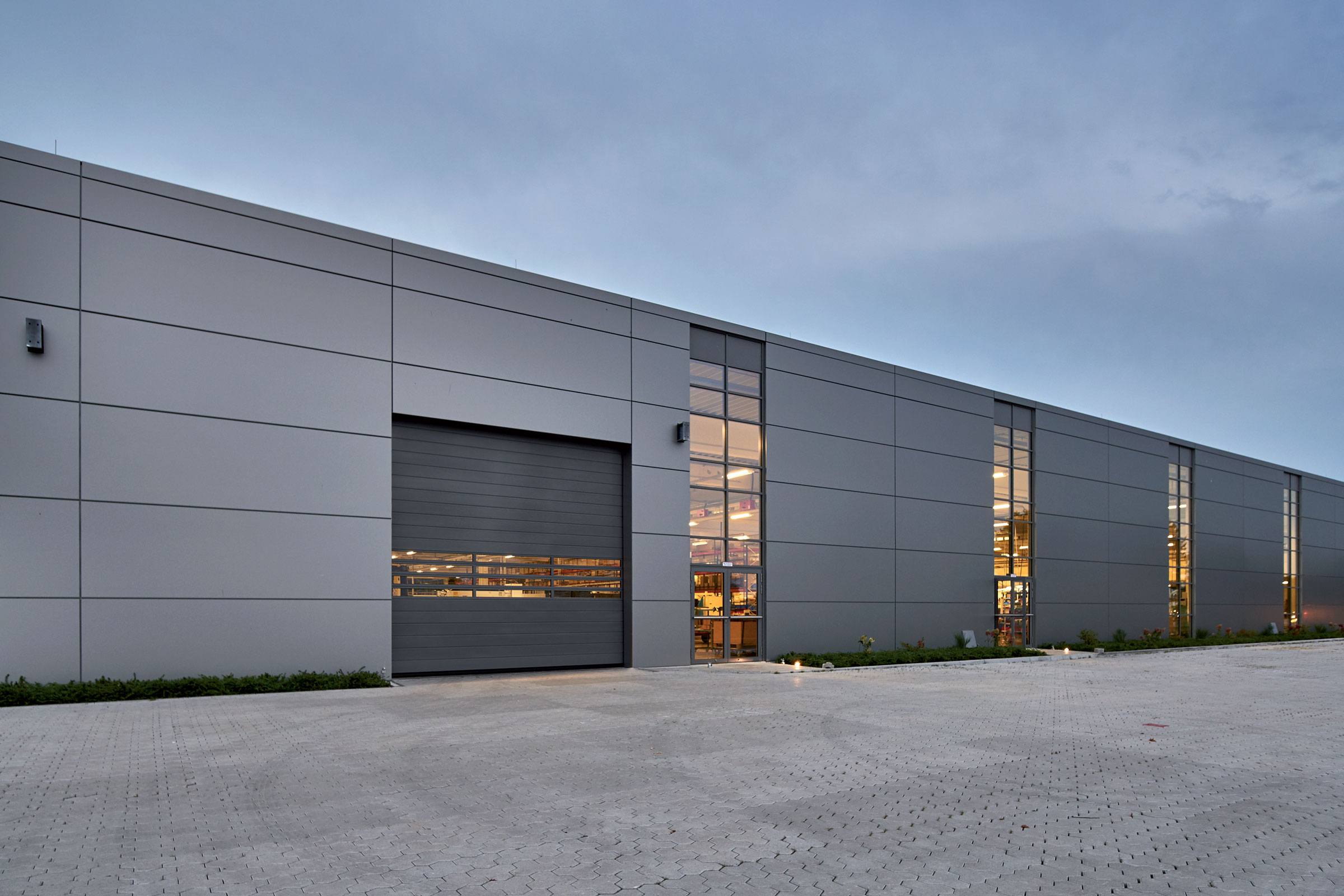Story at a glance:
- High-speed doors are defined as non-swinging doors used primarily to facilitate vehicular access or material transportation and having an automatic closing device.
- High-performance doors often improve the energy efficiency of projects and help them earn LEED points.
When it comes to high-performance doors, an operations manager has certain expectations. It should open and close reliably, and with speed. It should not be the cause of an operational disruption, as can happen with other types of doors. And it should be easy to operate by any level of skills found with onsite workers.
But talk to an executive, architect, sustainability officer, energy leader, or anyone else who has concerns about energy efficiency and climate-altering greenhouse gases, and the word “performance” takes on additional meaning.
The high-performance door functions as an extension of the building’s HVAC system and should be good at contributing to temperature control within the building. After all, what good are tight building envelopes and highly efficient mechanical systems if a 20-foot-wide door cycles exceptionally slow?
Architect Joshua Harter is architectural support manager at Hörmann North America, a manufacturer of residential, commercial, and high-performance doors. The company’s high-performance models are characterized by high speed and high performance, and the company stands alone in having an architect on staff. Harter recently shared his thoughts on why all this matters.
What are the basics of a high-performance door?

Photo courtesy of Hormann
It has a drive unit, which is akin to the engine of a car. The industry standard is for that unit to raise and lower the door at a high speed. High-performance doors may be classified as fabric or rigid and are designed to accommodate high cycles with minimal maintenance.
One of our most popular activation devices is a wide-scan sensor that functions in a similar fashion as motion detectors do in settings like grocery store entrances.
How fast is “high speed?”
High-speed doors are non-residential models. DASMA (Door and Access Systems Manufacturers Association International) defines a high-speed door as “a non-swinging door used primarily to facilitate vehicular access or material transportation and having an automatic closing device, with an opening rate of at least 32 inches per second and a closing rate of at least 24 inches per second.”
Most of our doors open at a rate of 45 to 80 inches and close at about 30 inches per second. Our Speed-Guardian™ C U 42 high-performance rigid door is installed primarily on high cycle, exterior door openings. At an opening speed of 80 inches per second, that model packs a punch when it comes to operational efficiency and energy savings. We say speed is the new green because the speed reduces the amount of time the doorway is open.
Does that make Hörmann doors sustainable?
Yes, in fact our doors qualify for LEED points. We’ve conducted a life cycle analysis, or LCA, which demonstrates our commitment to being part of the sustainability of buildings.
Our high-performance doors were recently installed in a Passive House–certified residential and dining facility at the University of Victory in British Columbia. Other interesting and green structures using our doors are two recently completed tall structures made of timber—Bakers Place (Madison, Wisconsin) and Ascent (Milwaukee).
Is there an industry standard for air exchanges as managed by high-performance doors?
Yes. There are two industry standards—ASHRAE and DASMA. We adhere to industry standards by way of studying minute technical details and the economic benefits of high-performing doors.
In one study we found that a company was able to achieve a $28,000 savings—and an early ROI—with a high-performance door that replaced a slow speed roll-up door. An additional benefit of high speed door operation is reduced wait time for forklift operators moving through the doorway.
What maintenance is required on high-performance doors?

Photo courtesy of Hormann
There is little to no maintenance required on Hörmann doors. A visual inspection is recommended once per quarter. The beauty of our doors is their resilience. We have a service support app that allows maintenance personnel to troubleshoot on the spot, 24/7; as far as we know we are the only high-performance door company in the industry who offers this type of support.
Many of our high-performance models are springless because of the direct-drive component—meaning there are no moving parts in the side frames; springs typically break with frequency, which is not ideal in an operation with high cycles.
Hörmann doors are engineered by our parent company in Europe, manufactured in the US, with some components supplied in collaboration with manufacturing partners. That includes GFA for the motors and BEA for the wide-scan activation.
How is safety addressed with high-performance doors?
Most models come equipped with a built-in light curtain within the guide tracks. If a light beam is interrupted while the door is closing, the door automatically reverses. Modern activation methods like the scan-protect mentioned earlier may be programmed to “remember” objects and type of activity around the doorway creating a smarter, safer environment.
The doors are also quiet, so we have optional visual equipment available to indicate what the door is doing—a light that is solid red when it’s about to rise, flashing red while rising, green at the top, and flashing red when it’s about to go down.
How do architects incorporate high-performance doors into projects?
Architects work with BIM (building information modeling) through Autodesk® Revit®, which gives them key product details for making accurate design decisions. Our data also helps them incorporate structural and thermal loads with our doors into their plans, even in complicated and tight situations.
In addition to working on adding more products to our BIM offerings, we are continually expanding our architectural support resources because that’s what will distinguish us from other door companies during the project design phase.
Note: Harter serves as current chair on the DASMA High Performance Doors Committee.

